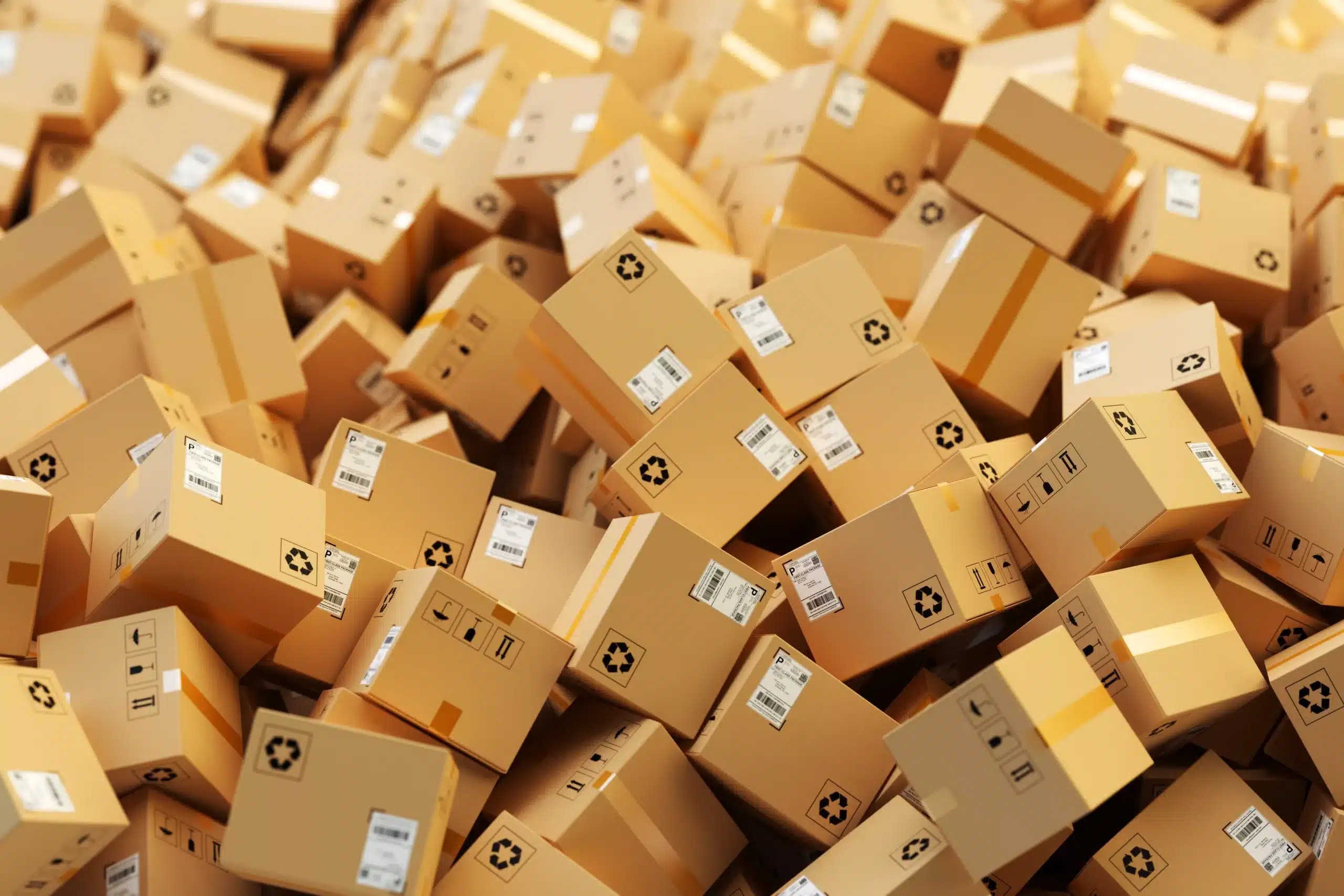Recycling symbols explained: a guide to labels found on packaging

Effective packaging needs to be carefully thought out from the start to minimise waste and support sustainability. The best sustainable packaging offers maximum product protection while minimising the use of materials, particularly new virgin materials.
To enable more circularity and recycling, it is critical to tell your customers how to properly dispose of packaging in the most environmentally friendly manner. However, with the abundance of recycling symbols on the market, do you or your customers really know what each one means?
In this blog post, we’ll look at different types of labels that you’ll see on packaging. We’ll be talking about the On-Pack Recycling Label scheme, international recycling symbols, and some other labels you’ll see around. We’ll also explain what each label means.
- 1.
- 2.

What are the recycling symbols and what do they mean?
With so many recycling labels available, it may be tricky to determine whether packaging is recyclable.
Research from OPRL has shown that customers are often confused by multiple labels appearing on packaging and don’t always comprehend the meaning of the recycling symbols.
Below, we’ve rounded up some of the most popular recycling labels on packaging, so you can get a better understanding of what they mean and how they can help guide your customers.
The On-Pack Recycling Label (OPRL) scheme
The OPRL is a nationwide programme developed by the British Retail Consortium (BRC), the Food and Drink Federation (FDF) and their leading members in partnership with WRAP (Waste & Resources Action Programme).
This independent programme is designed to help customers determine whether the packaging is recyclable, based on the existing recycling regulations and infrastructure in the UK.
It provides a simple and uniform labelling solution that can be applied to a wide range of packaging. The three primary labels are:

Recycle
Refers to packaging collected by 75% or more of UK local authorities and then sorted, processed and recycled into new packaging or products.

Don’t recycle
Used on packaging that is collected by less than half of UK local authorities and/or cannot be sorted, processed and recycled into new packaging or products.

Recycle with bags at large supermarkets | Don’t recycle at home
Applied on plastic wrapping such as bread bags, fruit and veg bags, crisp packets and chocolate wrappers. You can recycle this type of packaging at recycling points in selected supermarkets.
If you need help locating your nearer recycling facility, Recycle Now provides an easy-to-use online recycling locator.
OPRL predominantly works to a “binary labelling system” to streamline recycling process and decrease contamination. The new OPRL label feature a straightforward “recycle” or “don’t recycle” instruction on the packaging. The Government’s new Extended Producer Responsibility scheme is mandating this on-packaging labelling for use across household packaging from 31st March 2026.
International recycling codes
The international recycling codes for materials are another type of labels frequently seen on packaging. They help determine whether a product can be recycled based on the type of material it is made of.
Below is an overview of the main categories, along with a brief explanation and recycling status.
Recycling symbols for plastic

PET (Polythene Terephthalate) – Widely recycled
Commonly used in consumer products such as soft drink bottles and some packaging. It is recyclable and widely recycled across the UK, but not suitable for repeated use. Recycled PET is called rPET – often referred to as Post-Consumer Waste. It can be incorporated into layers of PET sheet for further manufacture.

HDPE (High Density Polyethylene)- Recyclable – Check locally
Most commonly recycled plastic used in products such as recycling refuse sacks, oil bottles and some plastic bags.
It is stiff and hard-wearing, and both reusable and commonly recyclable at major supermarkets.

PVC (Polyvinyl Chloride) – Non-recyclable
Soft, flexible plastics used in products such as clear plastic food wrapping, cooking oil bottles and toys. It can be toxic and only less than 1% is recycled.

LDPE (Low-Density Polyethylene)- Recyclable – Check locally
Commonly used in plastic packaging such as Airsac, plastic carrier bags, shrink wrap pallet covers and stretch wrap. It can be reused and is also considered less toxic than some other types of plastics.

PP (Polypropylene) – Recyclable – Check locally
Tough, lightweight plastic with excellent heat resistance properties.
Commonly used for plastic bottle tops, plastic pallets and some packing tapes. It is recyclable and safe for reuse.

PS (Polystyrene) – Recyclable – Check Locally
Ultra-lightweight plastic, commonly used in products such as take-out food containers, egg cartons and packaging (i.e. Styrofoam).
It breaks easily, so is often used for yogurt 4 packs, for example, where the other plastics will not “snap”, however, this can also contaminate the environment. PS plastic is recyclable but is not well recycled in practice, with almost no kerbside collection in the UK. Specialist providers such as Nottingham Recycling Ltd (part of the Macfarlane Group), do offer this service to businesses, however.

Non-recyclable
Any other plastics for which reusability and recyclability rules have not been specified.
Recycling symbols for paper

Recyclable – PAP (Cardboard)
Refers to packaging manufactured using corrugated cardboard. Commonly used for products such as cardboard boxes, postal wraps, postal envelopes, ecommerce and transit packaging.

Recyclable – PAP (Paperboard)
Refers to products manufactured with non-corrugated fiberboard. Examples include gift packaging and postal tubes.

Recyclable – PAP (Paper)
Indicates products that are made from regular paper. These include paper bags, paper tape, FlexiHex®, Kraft ribbed paper, copier paper and tissue paper.
Recycling symbols for metal

Recyclable – FE (Steel)
Recycling code for steel products, such as steel strapping
Recycling symbols for organic materials

Recyclable – FOR (Wood waste)
Recycling code used for products made from wood waste, including Presswood pallets, woodwool and Vermiculite.
Other symbols commonly seen on packaging
Below you will find some other labels that commonly appear on packaging.

FSC® Certification – the Forest Stewardship Council (FSC) label identifies wood-based products, such as paper, card and wood, from forests that are responsibly managed, socially beneficial, environmentally conscious and economically viable. It requires relevant certification. Read more here.

Industrially compostable packaging – This symbol identifies products that are industrially compostable. To be classified as industrially compostable, products must meet specific requirements defined in the European Standard EN 13432. Read more here.

Home compostable packaging – This label appears on products that are certified as home compostable. Products and packaging are not suitable for home composting unless they have relevant certifications, therefore, always check the label to ensure you dispose of them correctly. Read more here.

Help with Recyclable Packaging
At Macfarlane Packaging, we strive to help businesses make informed decisions about packaging. This is why our products are clearly labelled with information about the material, whether it can be recycled, and if it contains recycled content. We are also members of the On-Pack Recycling Label Scheme.
We can offer a wide range of sustainable packaging products and solutions to help lower the environmental impact of your business, reducing waste in your supply chain and lowering your carbon emissions.
If you need support finding the best eco-friendly packaging solution for your products, contact us today.
